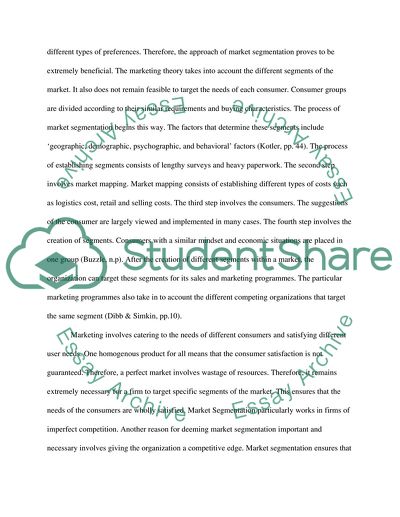Cite this document
(“The Process of Market segmentation Essay Example | Topics and Well Written Essays - 1500 words”, n.d.)
Retrieved from https://studentshare.org/marketing/1577933-explain-the-process-of-market-segmentation-why-is-it-thought-necessary-for-a-firm-to-target-specific-segments-of-the-market
Retrieved from https://studentshare.org/marketing/1577933-explain-the-process-of-market-segmentation-why-is-it-thought-necessary-for-a-firm-to-target-specific-segments-of-the-market
(The Process of Market Segmentation Essay Example | Topics and Well Written Essays - 1500 Words)
https://studentshare.org/marketing/1577933-explain-the-process-of-market-segmentation-why-is-it-thought-necessary-for-a-firm-to-target-specific-segments-of-the-market.
https://studentshare.org/marketing/1577933-explain-the-process-of-market-segmentation-why-is-it-thought-necessary-for-a-firm-to-target-specific-segments-of-the-market.
“The Process of Market Segmentation Essay Example | Topics and Well Written Essays - 1500 Words”, n.d. https://studentshare.org/marketing/1577933-explain-the-process-of-market-segmentation-why-is-it-thought-necessary-for-a-firm-to-target-specific-segments-of-the-market.


